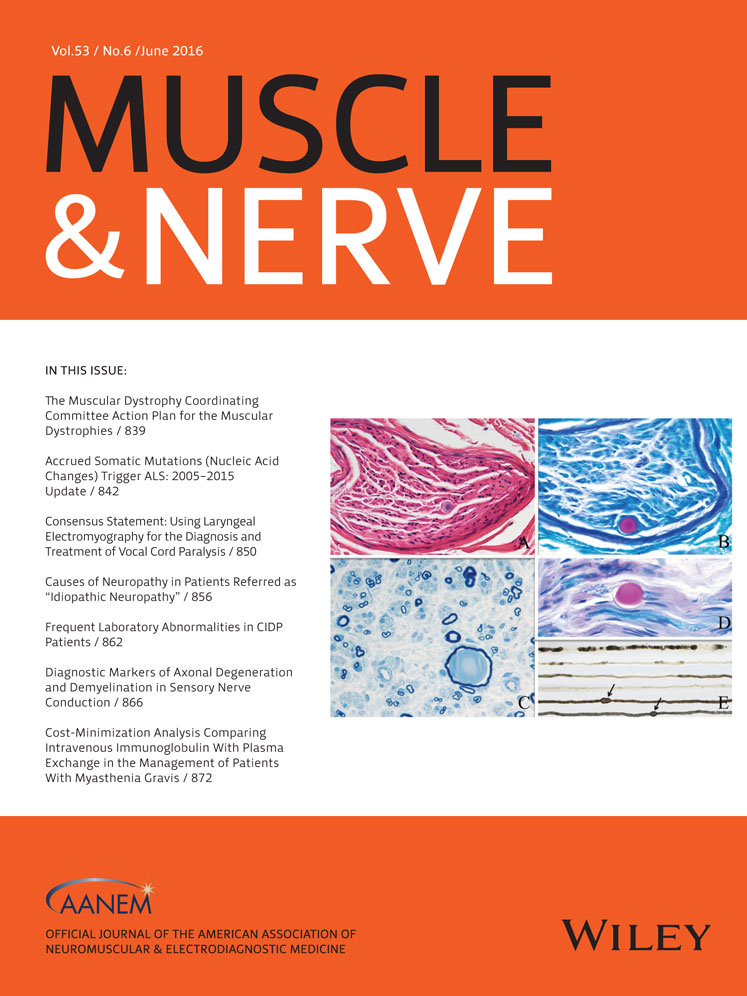Next generation sequencing detection of late onset pompe disease
ABSTRACT
Introduction
We report a patient in whom the diagnosis of a treatable disease was delayed for 30 years.
Methods
Recent discoveries of next generation sequencing (NGS) have allowed us to reconsider the diagnosis of limb girdle muscular dystrophy (LGMD) cases of unknown etiology.
Results
A 36-year-old man appeared to have LGMD with onset in shoulder girdle muscles, but all sarcolemmal and cytoskeletal proteins tested by immunoblotting and immunohistochemistry gave normal results. He developed respiratory insufficiency and became dependent on overnight ventilation at age 44. By NGS technology, 2 mutations in the GAA gene (intervening sequence 1 and a missense mutation in exon 11) allowed us to make a definite diagnosis of glycogenosis type II (Pompe disease) and start enzyme replacement therapy at age 71.
Conclusions
Mild nondystrophic features on muscle biopsy and respiratory muscle involvement should suggest late-onset Pompe disease in patients with an unclassified LGMD phenotype. NGS may help make the diagnosis. Muscle Nerve 53: 981–983, 2016




